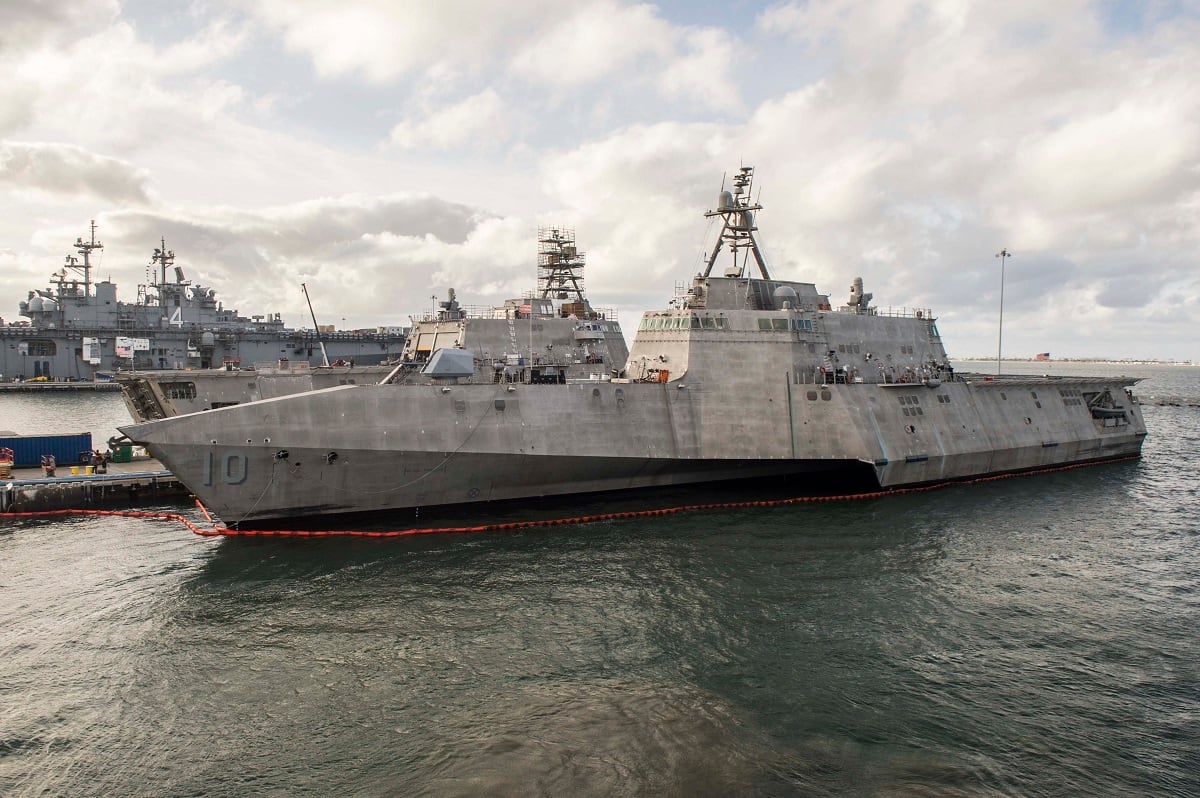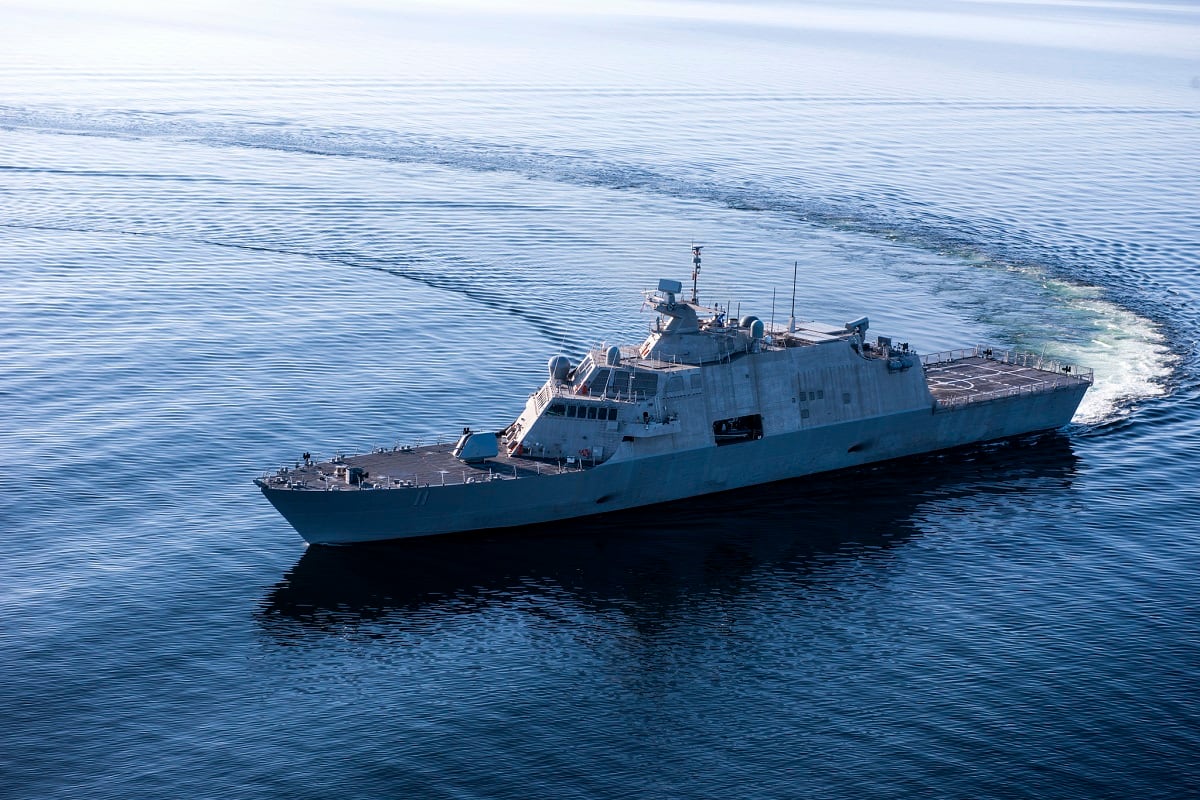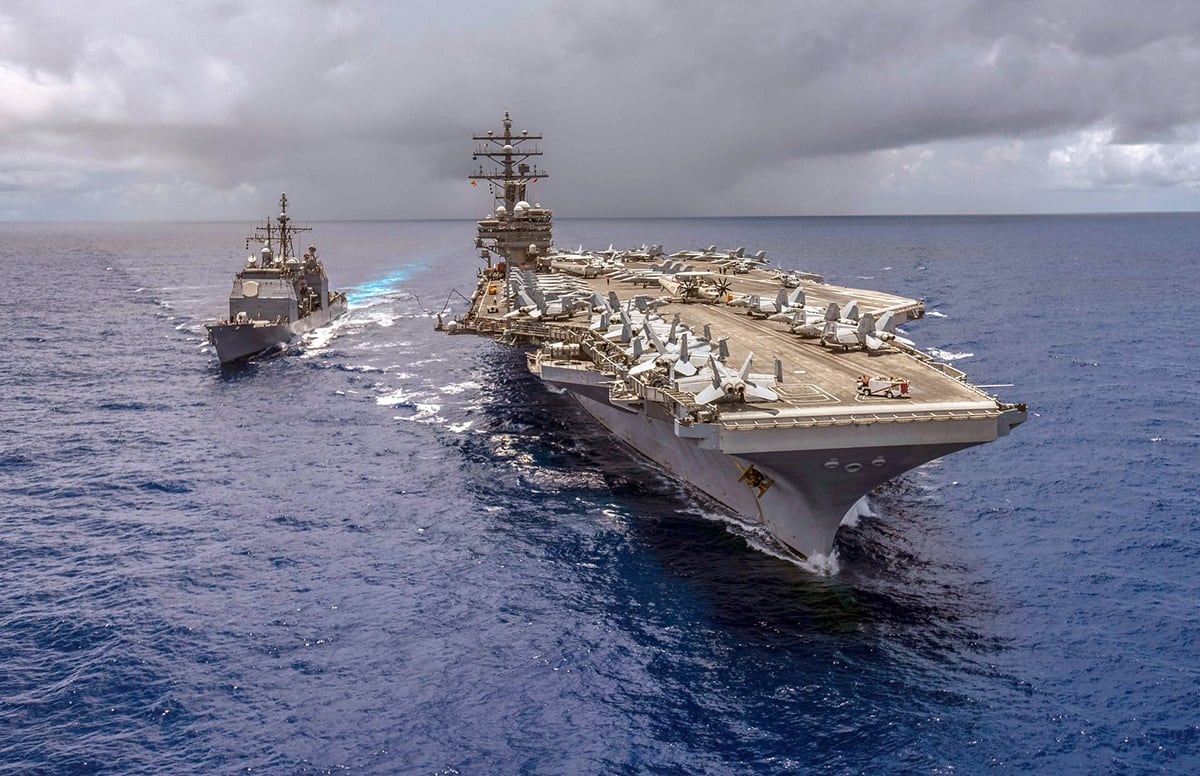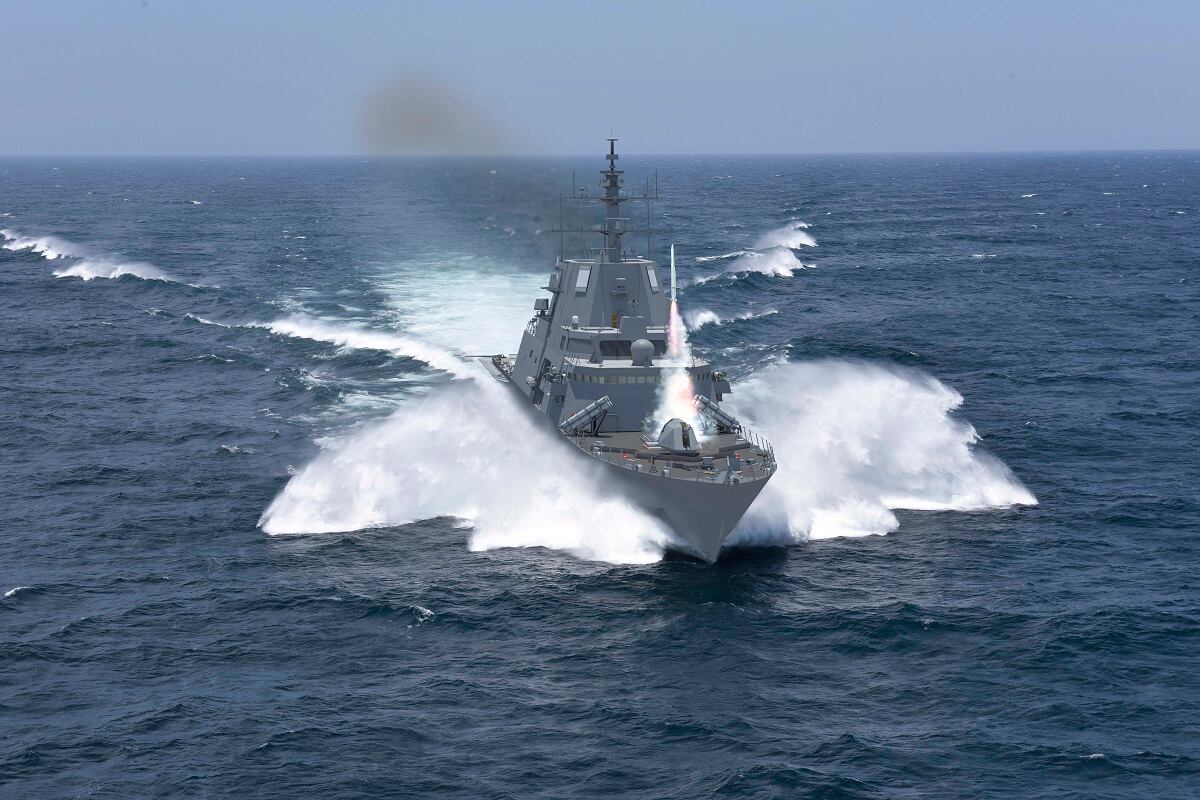WASHINGTON — Congress loves buying littoral combat ships, but when it comes to the packages of sensors and systems that make the ships useful, lawmakers have been less enthusiastic.
In the 2019 Defense Department funding bill that just left the conference committee, lawmakers have funded a 33rd, 34th and 35th littoral combat ship, three more than the 32-ship requirement set by the Navy. But when it comes to the mission modules destined to make each ship either a mine sweeper, submarine hunter or small surface combatant, that funding has been slashed.
Appropriators cut all funding in 2019 for the anti-submarine warfare package, a variable-depth sonar and a multifunction towed array system that the Navy was aiming to have declared operational next year, citing only that the funding was “ahead of need." The National Defense Authorization Act had authorized about $7.4 million, still well below the $57.3 million requested by the Navy, citing delays in testing various components.
Appropriators are also poised to half the requested funding for the surface warfare package and cut nearly $25.25 million from the minesweeping package, which equates to about a 21 percent cut from the requested and authorized $124.1 million.
Nor are this year’s cuts the only time appropriators have gone after the mission modules. A review of appropriations bills dating back to fiscal 2015 shows that appropriators have cut funding for mission modules every single year, and in 2018 took big hacks out of each funding line associated with the modules.
RELATED

The annual cutting spree has created a baffling cycle of inanity wherein Congress, unhappy with the development of the modules falling behind schedule, will cut funding and cause development to fall further behind schedule, according to a source familiar with the details of the impact of the cuts who spoke on background. All this while Congress continues to pump money into building ships without any of the mission packages having achieved what’s known as initial operating capability, meaning the equipment is ready to deploy in some capacity.
(The surface warfare version has IOC-ed some initial capabilities but is adding a Longbow Hellfire missile system that will be delayed with cuts, the source said.)
That means that with 15 of the currently funded 32 ships already delivered to the fleet, not one of them can deploy with a fully capable package of sensors for which the ship was built in the first place — a situation that doesn’t have a clear end state while the programs are caught in a sucking vortex of cuts and delays.
“This is a prime example of program issues causing congressional cuts which lead to further delays, then more cuts in a vicious cycle," said Thomas Callender, a retired submarine officer and analyst with The Heritage Foundation.
The Navy has been pursuing a strategy of buying 32 littoral combat ships and then 20 more lethal frigates now in development.
Surface warfare boss Vice Adm. Richard Brown told Defense News in August that both the surface warfare package and the anti-submarine warfare package were on track to be ready in 2019, but that future is now in doubt, Callender said.
“The appropriators' FY19 cuts of zeroing out ASW module and cuts to the MCM [mine countermeasures] module will likely delay IOC and operational testing,” Callender said.
RELATED

But the appropriators shouldn’t take all the heat, he added. The development of the different modules have hit technical issues and are all drastically behind schedule. The minesweeping package, for example, was initially supposed to deliver in 2008, but now isn’t slated to IOC until 2020, a date that will be further in doubt if Congress passes the appropriations bill as it left committee, sources agreed.
“The technical development issues and subsequent delays with several modules, especially the ASW and MCM mission packages, contributed to congressional angst and some of these cuts,” Callender said. “Many of these cuts, including the cuts recommended from the House Armed Services Committee and Senate Armed Services Committee for FY19 were reductions in the number of initial modules purchased until they have successfully completed operational testing.”
Both authorizers on the House and Senate Armed Services committees and the Appropriations committees have taken hacks at the funding to the modules, but ultimately the National Defense Authorization Act from the services committees is more of a guide for appropriators than a set of handcuffs. Appropriators can fund what they want to fund.
A statement from the office of Senate Appropriations Committee Chairman Sen. Richard Shelby, R-Ala., said the committee works with the Navy on these programs and funds what is ready to be funded.
“The Committee has worked with the Department of the Navy to understand the mission system test requirements — which have often changed due to variety of reasons — and focused on funding those requirements that are ready for production,” said Blair Taylor, Shelby’s communications director.
RELATED

Merry-go-round
Part of the reason the program is vulnerable to these cuts in a way that, for example, the Arleigh Burke destroyers are not to the same extent is because of the program’s structure. The ships were to be purchased separately and designed to be highly versatile, switching out in a matter of days when pierside from anti-surface systems to countermine systems to anti-submarine systems as the missions changed.
But a reorganization of the program in 2016 ordered by Chief of Naval Operations Adm. John Richardson and led by then-head of the Naval Surface Force Pacific Adm. Thomas Rowden changed each of the ships to single-mission ships, with the first few ships slated to be surface warfare variants.
But the warfare packages are still being developed under separate programs, leaving them as low-hanging fruit for cuts.
“The separation of the mission modules from specific LCS hull procurement does leave them more vulnerable to these type of programmatic cuts,” Callender said.
The whole issue is taking on increasing urgency as LCS builders Fincantieri in Marinette, Wisconsin, and Austal USA in Mobile, Alabama, begin pushing ships to the fleet by the handful each year. As of August, the Navy had 15 LCS vessels delivered, with 29 awarded and 11 in various stages of construction.
RELATED

But as the development modules has devolved into a merry-go-round, where cuts beget delays that beget more cuts, the fix in which this puts the Navy becomes more real by the day.
The fleet needs the capabilities the LCS modules are supposed to deliver. For example, the Navy is slated to decommission its last Avenger-class minesweeper in the 2020s. This means the minesweeping package really can’t suffer too many more delays without greatly increasing the threat posed to the Navy by cheap marine mines, leaving the fleet with only ad hoc solutions for combating them until the minesweeping package can be fielded in numbers.
And while there are other ships in the fleet such as the DDGs that can do anti-submarine and anti-surface missions, it’s the minesweeping package that has Bryan McGrath, a retired destroyer skipper and consultant with The FerryBridge Group, worried.
“I’m concerned that there aren’t enough MCM modules coming along fast enough, and I am concerned that there aren’t enough LCS in the current plan (four on each coast) dedicated to the MCM mission,” he said. “I’d like to see the LCS plan re-evaluated and more of them devoted exclusively to MCM.”
David B. Larter was the naval warfare reporter for Defense News.






